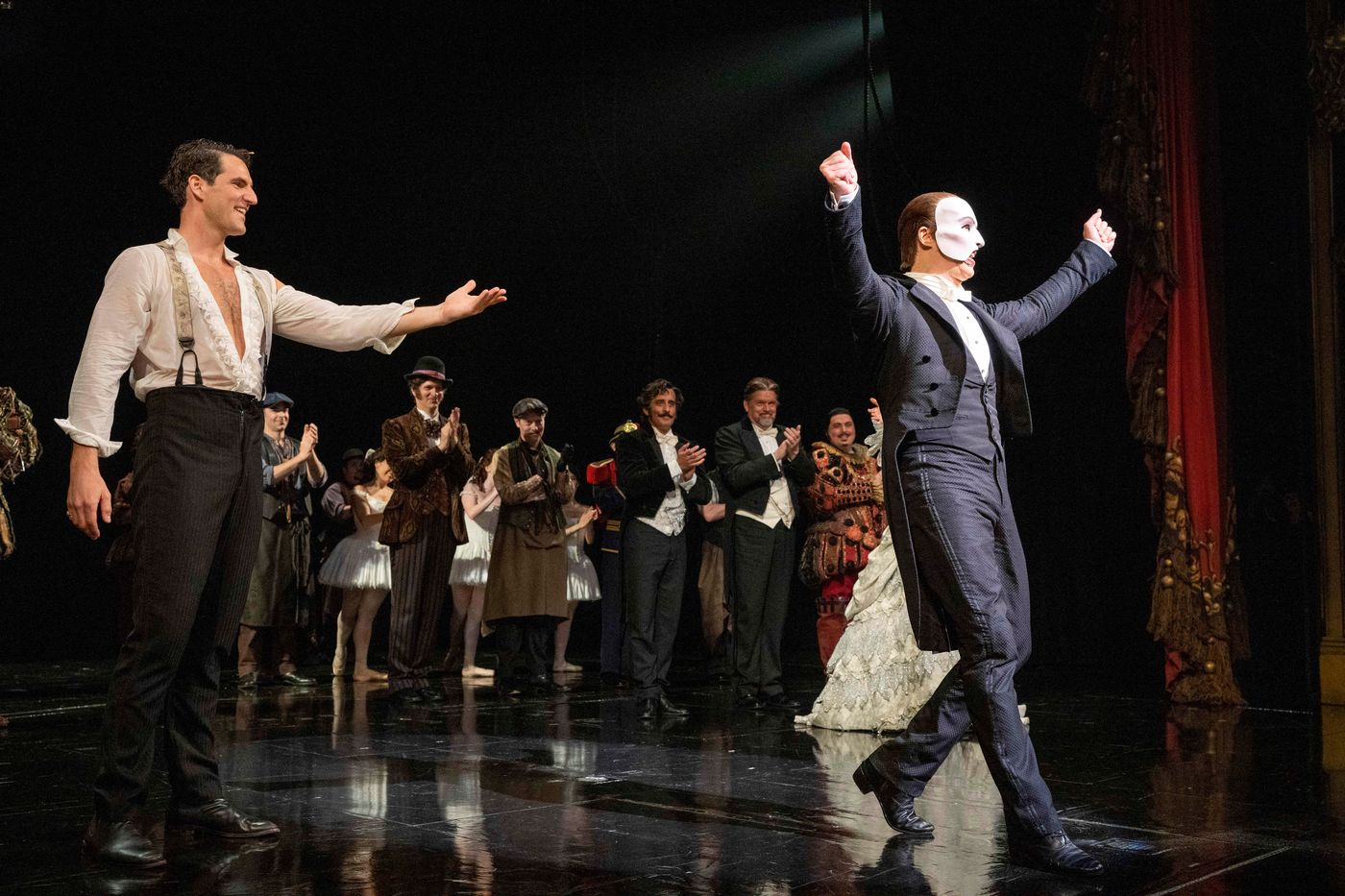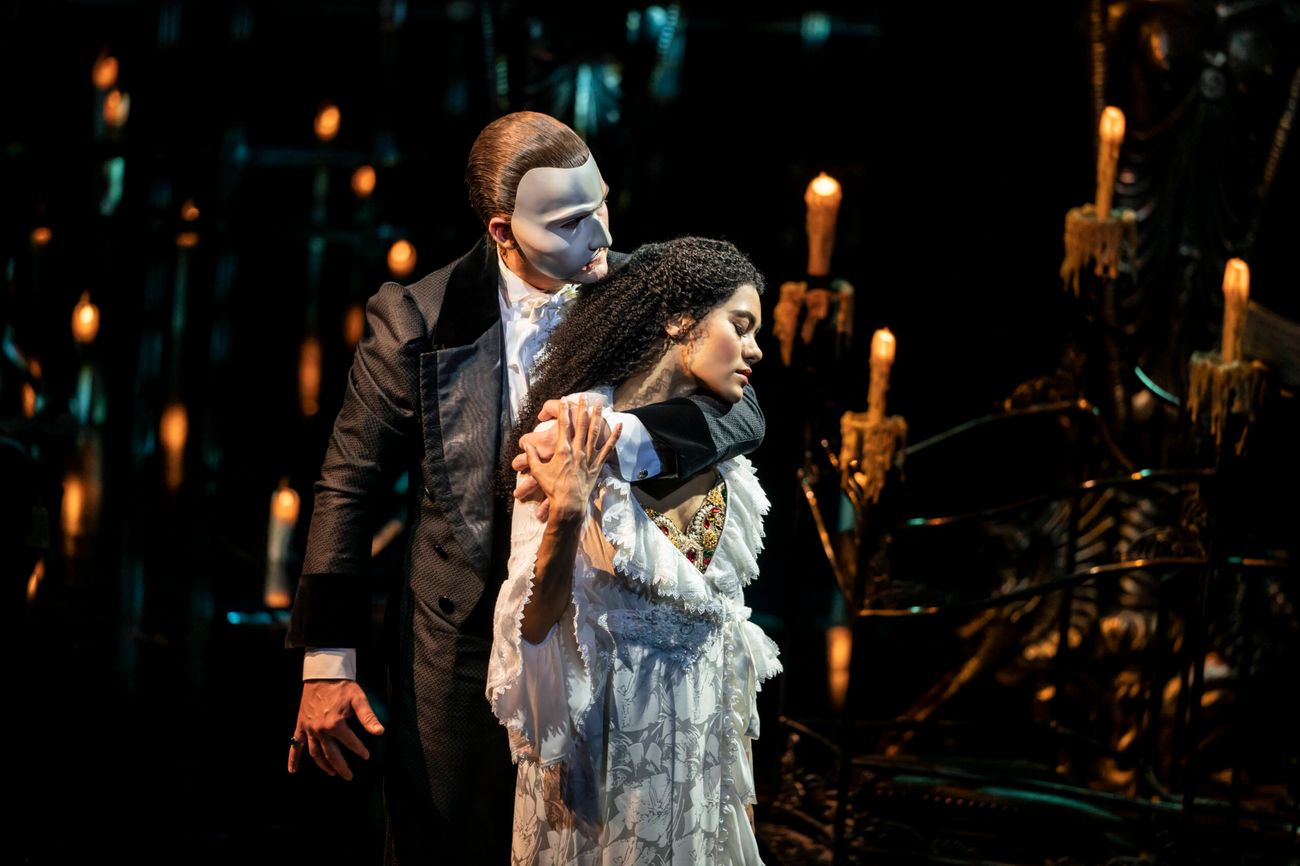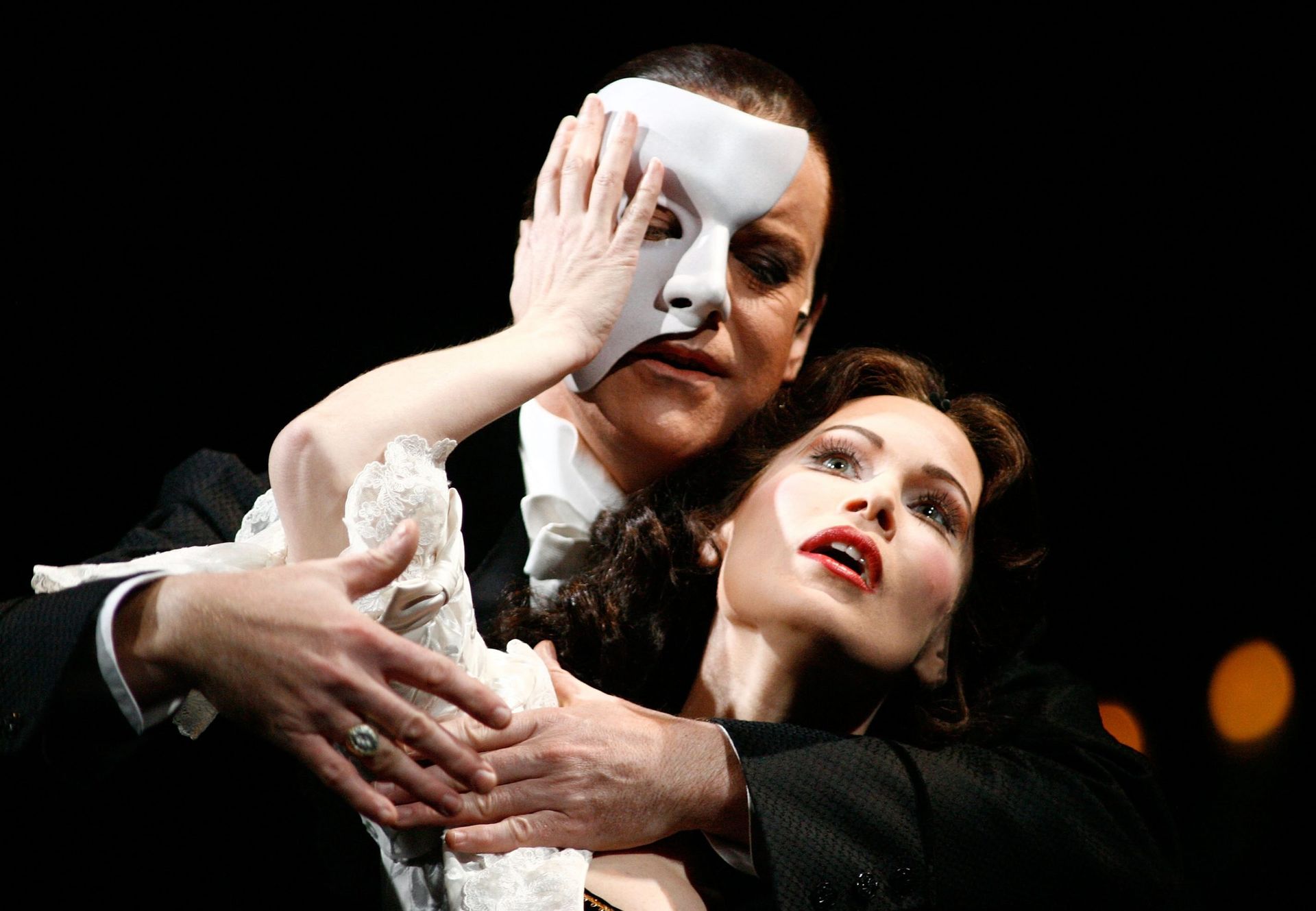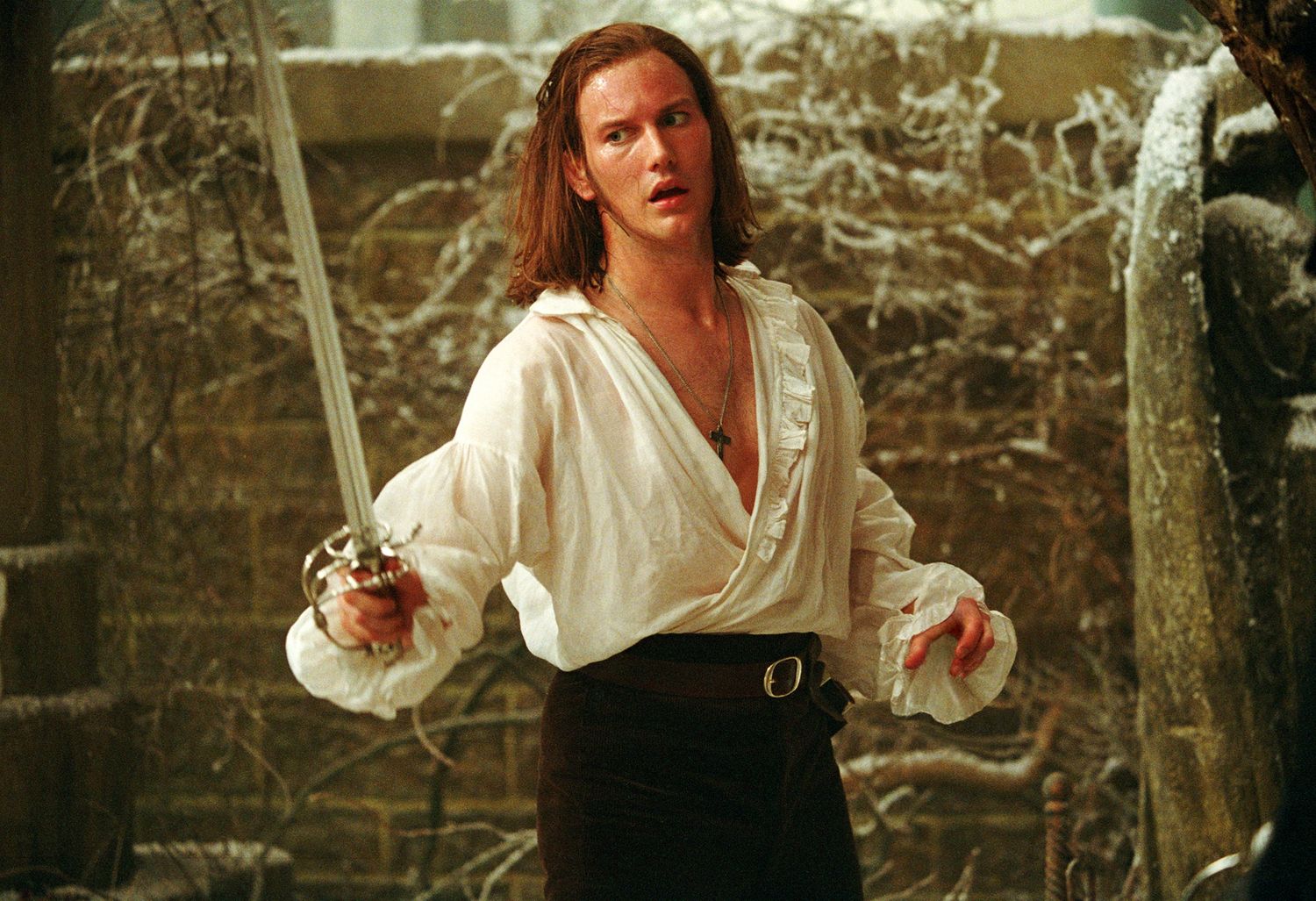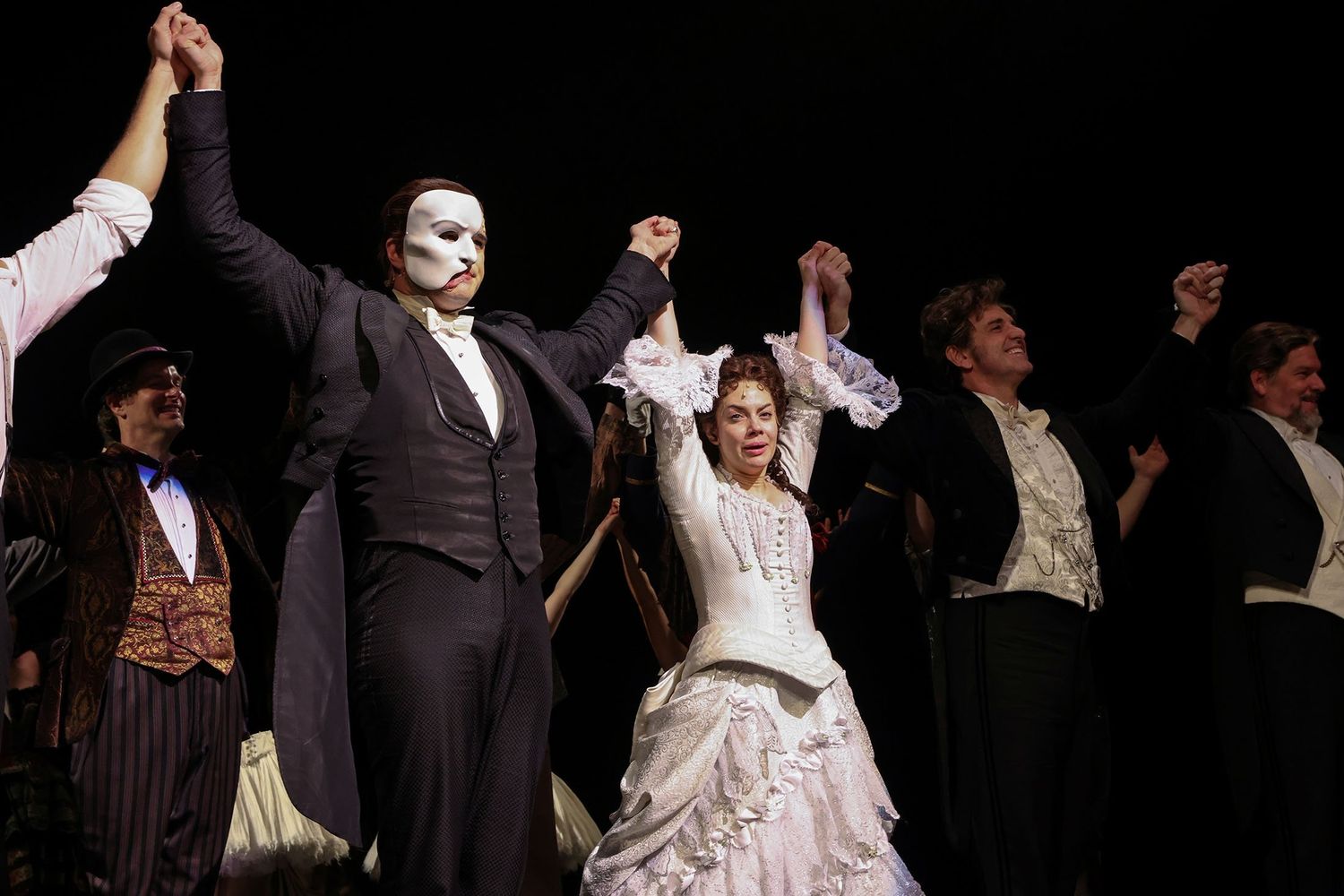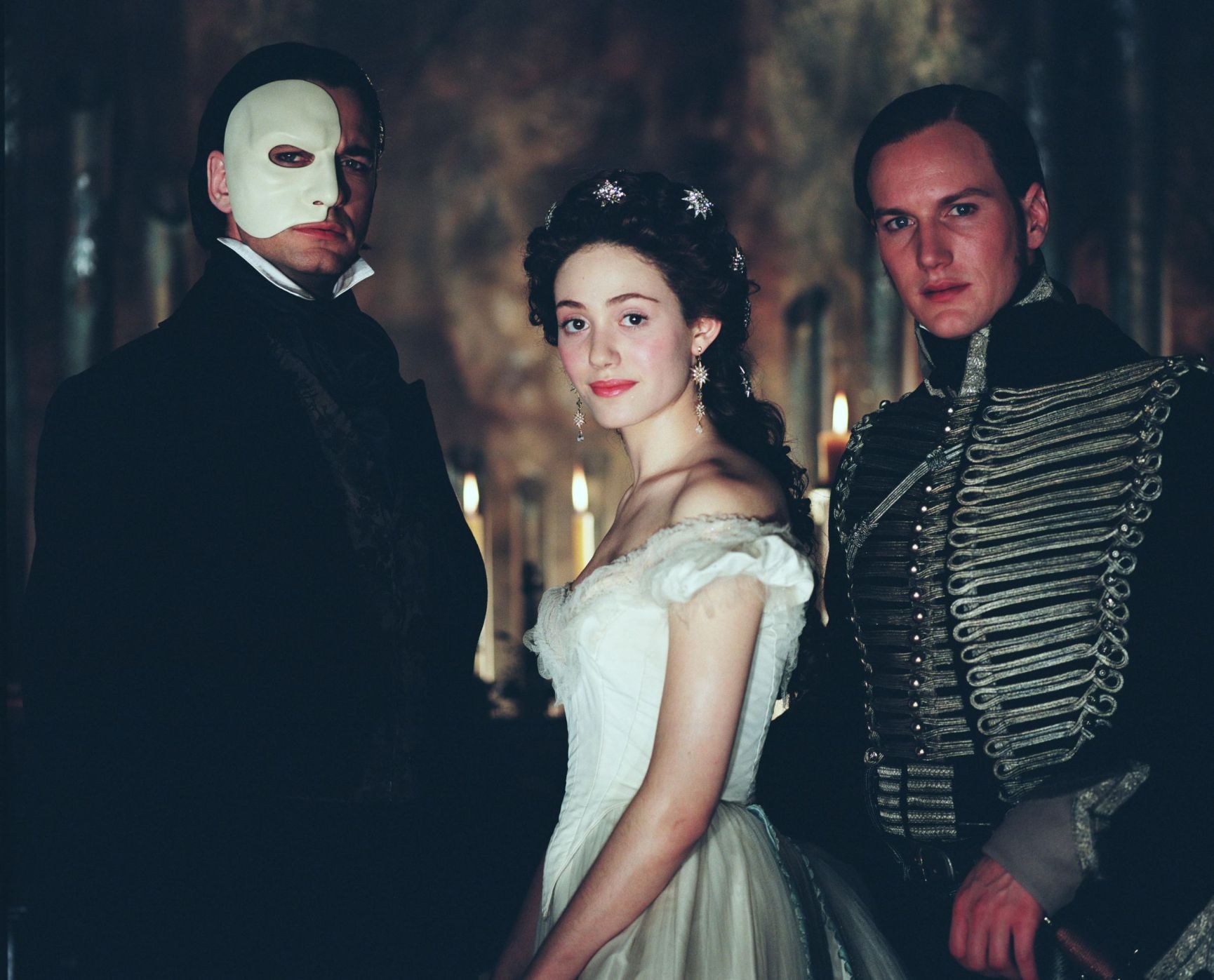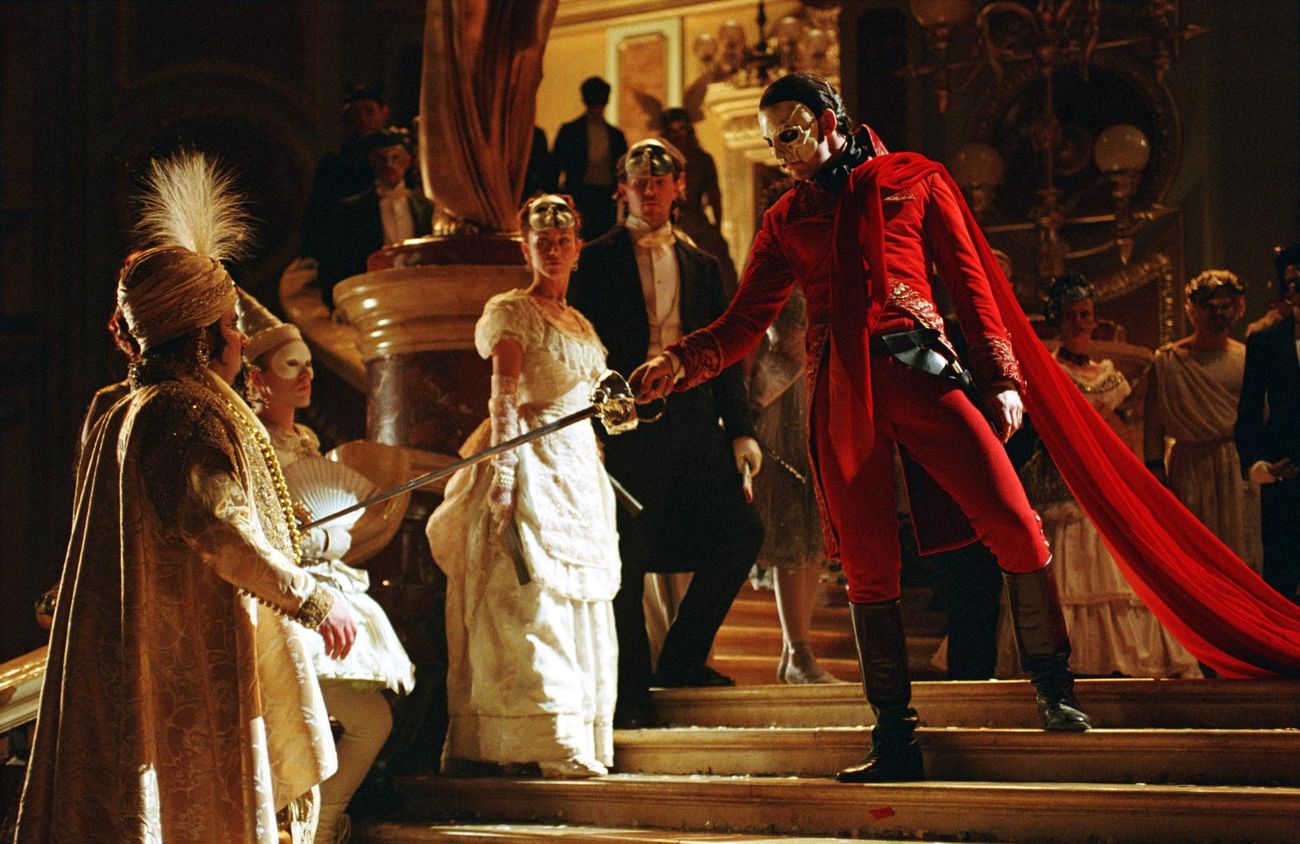Home>Events & Info>Opera>What Happens To The Phantom Of The Opera
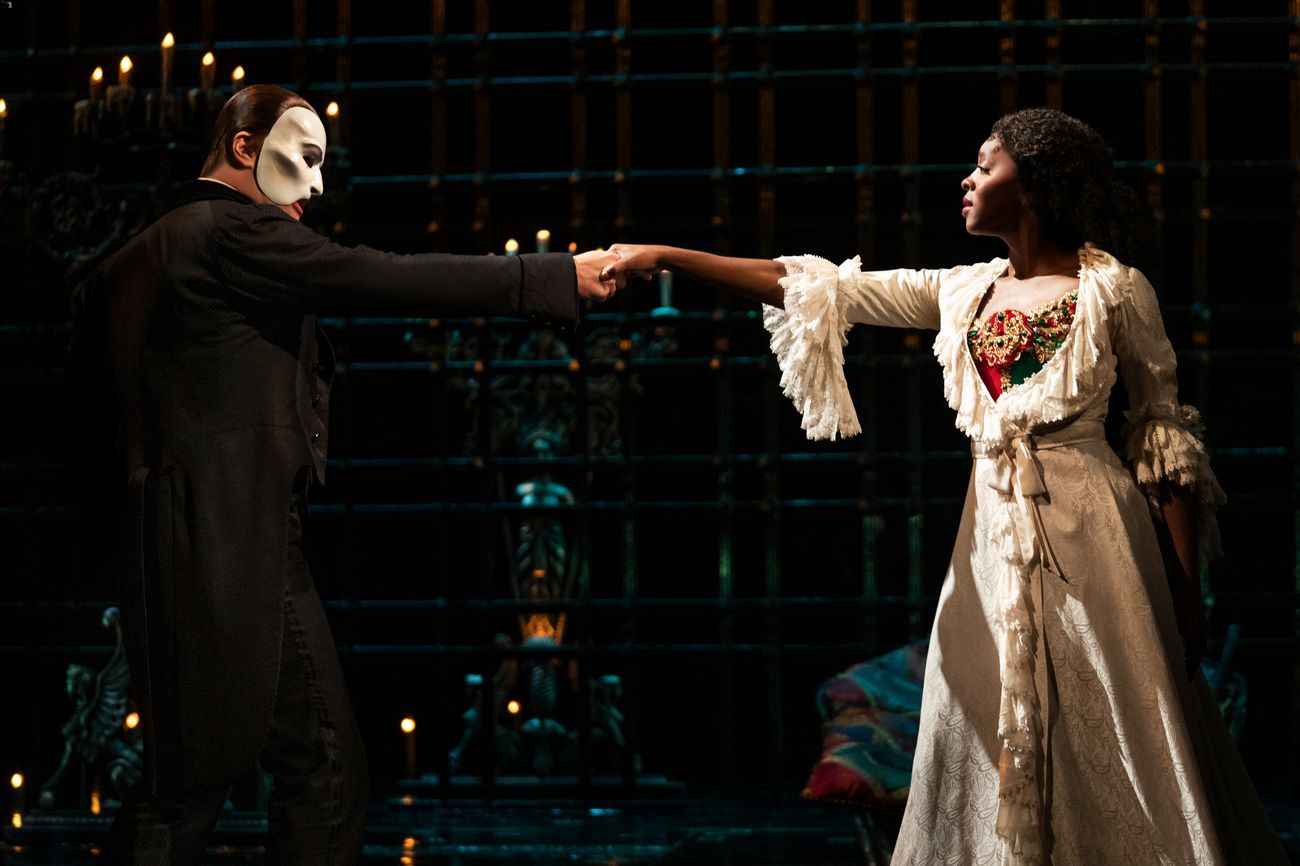

Opera
What Happens To The Phantom Of The Opera
Modified: January 22, 2024
Discover the captivating tale of the Phantom of the Opera as his mysterious actions unfold in this iconic opera production. Immerse yourself in the world of opera and witness the dramatic events surrounding the enigmatic character.
(Many of the links in this article redirect to a specific reviewed product. Your purchase of these products through affiliate links helps to generate commission for AudioLover.com, at no extra cost. Learn more)
Table of Contents
- Introduction
- Brief Summary of “The Phantom of the Opera”
- The Legacy of “The Phantom of the Opera”
- The Fate of the Phantom
- Stage Adaptations of “The Phantom of the Opera”
- Film Adaptations of “The Phantom of the Opera”
- Books and Literature Inspired by “The Phantom of the Opera”
- Cultural Impact and References to “The Phantom of the Opera”
- Conclusion
Introduction
“The Phantom of the Opera” is a timeless tale of love, passion, and mystery that has captivated audiences for over a century. This iconic story, originally written by French author Gaston Leroux, has transcended its literary origins and taken on a life of its own through various adaptations in different mediums.
At its core, “The Phantom of the Opera” explores the themes of beauty, obsession, and the power of music. Set in the grand Paris Opera House, the story follows the enigmatic and disfigured musical genius known as the Phantom, who becomes infatuated with a young and talented soprano named Christine Daaé. As the narrative unfolds, we delve into the complex relationship between the Phantom, Christine, and Raoul, the dashing Viscount who also vies for Christine’s affections.
The enduring appeal of “The Phantom of the Opera” lies in its ability to transport audiences into a world filled with intrigue, romance, and the supernatural. The enigmatic character of the Phantom, with his tragic backstory and undeniable talent, evokes a sense of compassion and fascination. Furthermore, the story’s exploration of human desires, the pursuit of artistic excellence, and the consequences of unchecked obsession resonates with audiences of all generations.
Over the years, “The Phantom of the Opera” has left an indelible mark on popular culture, inspiring countless adaptations in various forms. From its original publication in 1910 to the critically acclaimed musical by Andrew Lloyd Webber, the story continues to capture the imagination of audiences worldwide.
In this article, we will delve into the legacy of “The Phantom of the Opera” and explore its impact on stage productions, film adaptations, literature, and its cultural significance. Join us as we uncover the fate of the Phantom and the enduring allure of this captivating tale.
Brief Summary of “The Phantom of the Opera”
The Phantom of the Opera” is a haunting and mesmerizing story set in the prestigious Paris Opera House in the late 19th century. The narrative follows the intertwined lives of three central characters – the mysterious and disfigured Phantom, the talented soprano Christine Daaé, and the charming Viscount Raoul de Chagny.
At the heart of the story is the Phantom, a musical genius who hides in the shadows of the opera house and is known for his brilliance as a composer and performer. However, his disfigurement and reclusive nature have turned him into a feared and elusive figure.
When Christine, a gifted young singer, captures the attention of the Opera House’s management and the audience with her ethereal voice, the Phantom becomes enthralled by her talent. He takes on the role of her “Angel of Music,” tutoring her in secret and manipulating events behind the scenes to ensure her success.
As the bond between Christine and the Phantom deepens, complications arise when Raoul, a childhood friend and now a wealthy suitor, re-enters her life. The ensuing love triangle and Christine’s internal conflict between her feelings for the Phantom and Raoul escalate, leading to a series of dramatic and tragic events.
Driven by jealousy, obsession, and a desire for control, the Phantom resorts to violence and manipulation to enforce his will. The story culminates in a dramatic confrontation that exposes the dark secrets and intense emotions that have been simmering beneath the surface.
“The Phantom of the Opera” is a tale that explores themes of unrequited love, the destructive power of obsession, and the complexities of human nature. It delves into the blurred lines between beauty and monstrosity, morality and desire, and showcases the lengths individuals will go to achieve their desires.
This captivating story has enthralled audiences for generations, captivating them with its haunting melodies, atmospheric setting, and gripping narrative. Its timeless themes and unforgettable characters continue to resonate, ensuring the enduring popularity and legacy of “The Phantom of the Opera.”
The Legacy of “The Phantom of the Opera”
“The Phantom of the Opera” has left an indelible mark on the world of literature, theater, and popular culture. Since its original publication in 1910, this haunting tale has captivated audiences and inspired numerous adaptations, making it one of the most enduring and influential stories of all time.
One of the most significant contributions of “The Phantom of the Opera” is its impact on the theater world. Andrew Lloyd Webber’s musical adaptation, which premiered in London’s West End in 1986, has become a global phenomenon. It has been staged in over 30 countries, translated into multiple languages, and has become the longest-running musical in Broadway history. The musical’s iconic songs, such as “The Music of the Night” and “All I Ask of You,” have become beloved classics that have transcended the confines of the theater.
Beyond the stage, “The Phantom of the Opera” has also made its mark in the world of film. Several cinematic adaptations have been made, with notable versions including the 1925 silent film starring Lon Chaney and the 2004 film adaptation directed by Joel Schumacher. These movies have brought the story to a wider audience and showcased the visual splendor of the grand Paris Opera House.
Furthermore, “The Phantom of the Opera” has influenced and inspired countless other works of literature, music, and art. It has sparked a wave of musical theater productions and opera compositions, with themes and characters reminiscent of the original story. In literature, authors have paid homage to the Phantom by creating spin-off novels and exploring different perspectives and backstories.
The cultural impact of “The Phantom of the Opera” extends beyond the confines of the stage and the page. It has embedded itself into popular culture, serving as a source of inspiration for various references and adaptations. From Halloween costumes to theme park attractions, the Phantom has become an iconic figure associated with mystery, romance, and the power of music.
The enduring legacy of “The Phantom of the Opera” lies in its ability to captivate and resonate with audiences across generations. Its exploration of love, desire, and the complexities of the human spirit continues to be relevant, making it a timeless and enduring piece of storytelling. Whether in the form of the musical, the novels, or the films, “The Phantom of the Opera” remains a cultural touchstone that continues to leave an indelible mark on the hearts and minds of its audience.
The Fate of the Phantom
The fate of the Phantom in “The Phantom of the Opera” is a subject of much intrigue and speculation. As a complex and enigmatic character, his journey is filled with twists, turns, and a touch of tragedy that leaves a lasting impact on the audience.
Throughout the story, the Phantom experiences a range of emotions, from unrequited love and profound loneliness to anger and desperation. His obsession with Christine drives him to commit dark and manipulative acts as he tries to exert control over her life and ensure her exclusive devotion.
In the climactic final act, the Phantom’s true nature is revealed as he abducts Christine and forces her to choose between him and Raoul. However, there is a glimmer of humanity in his character when he ultimately releases her and allows her to be with the man she truly loves.
In some adaptations, the Phantom meets a tragic end, succumbing to his demons and the consequences of his actions. This tragic ending emphasizes the destructive power of obsession and unrequited love, leaving a poignant message about the consequences of unchecked desires.
In Andrew Lloyd Webber’s musical adaptation, the Phantom’s fate is left slightly ambiguous. After Christine declares her love for him, he is deeply moved and realizes that he must let her go. He disappears into the shadows of the opera house, leaving behind a mask and a rose, symbolizing his presence and impact on the lives of those he encountered.
The uncertainty surrounding the Phantom’s fate adds to the mystique and intrigue of his character. It prompts audiences to reflect on the complexities of human nature, the power of love, and the consequences of one’s actions.
The fate of the Phantom resonates with audiences because it taps into universal themes of redemption, forgiveness, and the search for acceptance. Despite his flaws and misguided actions, the Phantom elicits sympathy and understanding, reminding us of the inherent complexities within every individual.
Ultimately, the fate of the Phantom reflects the overall message of “The Phantom of the Opera” – the transformative power of love, the importance of empathy, and the profound impact that one’s choices and actions can have on others. This timeless character continues to captivate audiences, leaving them to ponder his ultimate fate and the lessons his story imparts.
Stage Adaptations of “The Phantom of the Opera”
“The Phantom of the Opera” has seen numerous stage adaptations that have brought the haunting tale to life in theaters around the world. The most famous and iconic of these adaptations is Andrew Lloyd Webber’s musical, which premiered in London’s West End in 1986 and has since become a global phenomenon.
Lloyd Webber’s musical adaptation of “The Phantom of the Opera” is known for its grandeur, stunning sets, and memorable music. From the iconic chandelier descending from the ceiling to the elaborate masquerade ball scenes, the production immerses audiences in the world of the Paris Opera House and the mysterious Phantom. The musical has been praised for its powerful performances, captivating storytelling, and hauntingly beautiful songs such as “The Phantom of the Opera” and “Masquerade.”
Since its debut, the musical has been staged worldwide, captivating audiences with its mesmerizing story and breathtaking stagecraft. It has become the longest-running musical in Broadway history and has received numerous prestigious awards, including multiple Tony Awards.
Aside from Lloyd Webber’s musical, other notable stage adaptations of “The Phantom of the Opera” have also been produced. These adaptations often infuse different artistic interpretations and styles into the story, offering unique perspectives on the beloved characters and narrative.
Some stage adaptations explore different facets of the Phantom’s backstory, providing deeper insight into the torment and struggles that shaped his character. These adaptations delve into his early life, his attraction to music, and the circumstances that led him to become the mysterious figure haunting the Paris Opera House.
Other stage adaptations focus on modern interpretations, reimagining the story in contemporary settings or incorporating innovative staging techniques. Through the use of cutting-edge technology and creative design choices, these adaptations seek to bring a fresh and immersive experience to audiences.
“The Phantom of the Opera” has demonstrated its enduring appeal on the stage, captivating audiences with its timeless tale of love, longing, and redemption. Whether through Lloyd Webber’s iconic musical or other unique interpretations, these stage adaptations continue to draw in audiences, showcasing the ongoing fascination with this haunting and captivating story.
Film Adaptations of “The Phantom of the Opera”
“The Phantom of the Opera” has been adapted for the silver screen several times, bringing the haunting tale to life in a visual medium. These film adaptations have allowed audiences to experience the grandeur and mystery of the story in a new and captivating way.
One of the notable film adaptations of “The Phantom of the Opera” is the 1925 silent film starring Lon Chaney as the Phantom. This iconic film helped solidify the image of the Phantom in popular culture, with Chaney’s haunting portrayal and iconic makeup becoming the definitive representation of the character. The film’s atmospheric visuals and impressive sets contributed to the Gothic allure of the story, immersing viewers in the eerie and haunting world of the Paris Opera House.
In 2004, director Joel Schumacher brought “The Phantom of the Opera” to the screen once again with a lavish film adaptation of Andrew Lloyd Webber’s musical. Starring Gerard Butler as the Phantom and Emmy Rossum as Christine Daaé, the film sought to capture the grandeur and spectacle of the stage production on a cinematic scale. With stunning visual effects, breathtaking costumes, and powerful performances, the film brought the beloved music and characters to life in a new and visually captivating way.
These film adaptations of “The Phantom of the Opera” have allowed the story to reach a wider audience beyond the confines of the theater. They have introduced new generations to the timeless tale of love, obsession, and tragedy while showcasing the emotive power of music on the big screen.
The film adaptations have also further immortalized the character of the Phantom, with each actor bringing their unique interpretation to the role. From Lon Chaney’s haunting and iconic portrayal to Gerard Butler’s grittier and more tortured version, each actor has left their mark on the character’s portrayal and helped keep the Phantom alive in popular culture.
Whether through the atmospheric and pioneering 1925 silent film or the sumptuous and visually stunning 2004 adaptation, these film versions of “The Phantom of the Opera” have allowed audiences to experience the tale in a new and captivating way. They have showcased the enduring appeal of the story and its characters, ensuring that the legacy of the Phantom continues to resonate on the silver screen.
Books and Literature Inspired by “The Phantom of the Opera”
“The Phantom of the Opera” has left a lasting impact on literature, inspiring numerous books and works that explore different aspects of the haunting tale. From spin-off novels to retellings, these literary works build upon the rich themes and characters of the original story, offering new perspectives and insights.
One notable example is “The Phantom of Manhattan” by Frederick Forsyth. Released in 1999, this sequel to the original novel takes place ten years after the events at the Paris Opera House. It delves into the continued struggles and obsessions of the Phantom, revealing further layers to his character and exploring the consequences of his actions.
Another prominent book inspired by “The Phantom of the Opera” is “Phantom” by Susan Kay. Published in 1990, this novel provides an in-depth exploration of the Phantom’s backstory, delving into his early life, his unrequited love, and the events that led him to become the enigmatic figure haunting the Paris Opera House. “Phantom” offers a poignant and empathetic portrayal of the character, shedding light on his motivations and inner torment.
In addition to these adaptations, there are countless other books and literary works that draw inspiration from “The Phantom of the Opera.” These include reimagined versions set in different time periods or locations, exploring different dimensions of the story and characters.
Furthermore, the impact of “The Phantom of the Opera” can be seen in various genres beyond traditional literature. It has influenced the development of Gothic and horror fiction, inspiring authors to create their own tales of tortured souls and haunted spaces. The themes of unrequited love, obsession, and the power of music can be found in numerous works that owe their inspiration to Leroux’s original masterpiece.
These books and literary works demonstrate the enduring fascination with “The Phantom of the Opera” and its ability to inspire and captivate audiences across different mediums. They provide readers with new perspectives, allowing them to dive deeper into the complex and haunting world that Leroux created.
Through these literary adaptations and reimaginings, the legacy of “The Phantom of the Opera” continues to grow, cementing its place in the canon of literature and ensuring that the enigmatic figure at the heart of the tale remains an enduring part of literary culture.
Cultural Impact and References to “The Phantom of the Opera”
“The Phantom of the Opera” has made a significant cultural impact, permeating various aspects of popular culture and becoming a reference point in books, films, music, and even everyday conversations. Its presence can be found in a multitude of mediums, showcasing the enduring fascination with the haunting tale.
In music, “The Phantom of the Opera” has inspired countless artists across genres, from rock bands to classical musicians. Many musicians pay homage to the iconic melodies of the musical, incorporating elements of the Phantom’s haunting songs into their own compositions. The powerful and emotive nature of the music lends itself to reinterpretation, allowing artists to infuse their own creativity while still capturing the essence of the story.
The influence of “The Phantom of the Opera” can also be seen in literature and film outside of direct adaptations. References to the Phantom’s iconic mask or the tale of forbidden love often make their way into other stories, creating a connection to the enduring themes and characters of the original work. Whether it be a subtle nod or a more overt homage, these references serve as a testament to the cultural impact of the Phantom.
Beyond the artistic realm, “The Phantom of the Opera” has influenced fashion and costuming. The image of the mysterious Phantom, with his half-mask and flowing cloak, has become instantly recognizable and has been a source of inspiration for fashion designers and costume creators. The Phantom’s signature style has been showcased in various forms, from high fashion runways to Halloween costumes, further solidifying his presence in popular culture.
In everyday conversations, the phrase “The Phantom of the Opera” has become shorthand for mysterious or elusive figures or situations. When someone or something remains hidden or enigmatic, references to the Phantom often emerge, reflecting the lasting impact and familiarity of the story.
Furthermore, “The Phantom of the Opera” has left its mark on theme parks, with attractions and shows inspired by the tale. These immersive experiences allow visitors to step into the world of the Paris Opera House, engaging with the iconic characters and the haunting atmosphere of the story.
The continued references and cultural impact of “The Phantom of the Opera” speak to its enduring appeal and relevancy. As a timeless tale of love, obsession, and the power of music, it continues to captivate the imagination and inspire new generations. Whether in music, fashion, literature, or everyday conversations, the legacy of the Phantom remains a significant part of our cultural landscape.
Conclusion
“The Phantom of the Opera” has made an indelible mark on the world of literature, theater, film, music, and popular culture as a whole. Gaston Leroux’s haunting tale of love, obsession, and tragedy has captivated audiences for over a century and continues to enthrall new generations.
From Andrew Lloyd Webber’s iconic musical to the various film adaptations, stage productions, and literature inspired by the story, the Phantom’s legacy lives on. Whether through the enchanting melodies, the complex characters, or the timeless themes, “The Phantom of the Opera” has left an enduring impact on the arts.
Beyond the realms of entertainment, the cultural impact of “The Phantom of the Opera” can be felt in everyday references and the fashion world. The story has become a touchstone for mystery, romance, and the enduring power of music.
The enduring fascination with the Phantom himself, with his enigmatic allure and tragic past, speaks to the complexity of the human experience. Through exploration of unrequited love, obsession, and the blurred lines between beauty and monstrosity, the story of the Phantom resonates on a deep and universal level.
“The Phantom of the Opera” serves as a reminder that human desires, passions, and flaws can shape our destinies and push us to both great heights and destructive ends. It speaks to the transformative power of love, the consequences of unchecked desires, and the importance of empathy and understanding.
As we continue to marvel at the grandeur of the opera house, the melodies of the haunting songs, and the tragic fate of the Phantom, we are reminded of the enduring power of storytelling. “The Phantom of the Opera” transcends time and medium, immersing us in a world of mystery, passion, and the pursuit of artistic excellence.
In conclusion, the enduring legacy of “The Phantom of the Opera” is a testament to the timeless nature of its themes and the emotional resonance of its characters. It continues to inspire, captivate, and move audiences worldwide and will continue to be cherished for generations to come.

